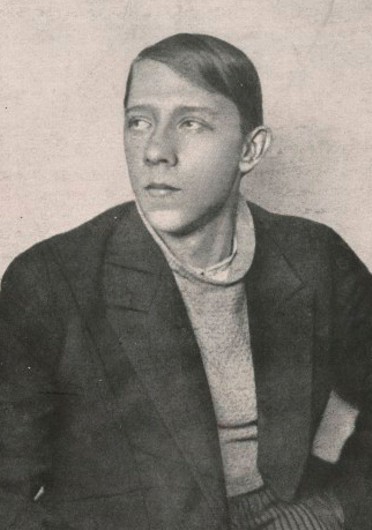
1885 – 1953
He was born in Moscow, but spent almost all his childhood in Kharkiv. In 1896 he entered the Kharkiv Real School, where he received his first professional skills in drawing and painting from the teacher of the school, the famous Kharkiv painter and teacher Dmytro Bezperchyi.
In September 1902 he entered the Moscow School of Painting, Sculpture and Architecture, but in April 1903 he was expelled “for failure and disapproving behavior.” His father, from whom he ran away at the age of 13 and returned to his house, even applied for his reinstatement in school, but it was rejected.
In 1904, Volodymyr entered the Odessa School of Merchant Shipping and sailed on a training sailing ship.
However, the desire to receive an education as an artist did not leave Volodymyr and in September 1905 he became a student of the Penza Art School, where he was educated.
In 1924, together with enthusiasts, he founded the Kyiv TYZ. He staged the production “At Dawn” based on the play of the same name by Ukrainian writer V. Gzhytskyi. Sketches have not been saved.
One of the organizers of the Kyiv TYZ, actor and director O. Solomarskyi, recalled: “Amvrosii Buchma took part in the staging of the performance “At Dawn” (…). Once he came to a rehearsal with the artist V. Tatlin. A. Buchma very vividly, interestingly, figuratively told us about the unique Carpathian Mountains, familiar and close to him from childhood (…) V. Tatlin, who together with the actors listened carefully to Amvrosii, suddenly said aloud: “Iron, iron ”- and quickly left the rehearsal room. Soon VolodymyrSoon VE brought to the theater a layout of “At Dawn”. The Carpathian Mountains were made of black sheet iron. “Only such a texture with proper lighting can give a vivid picture of the beautiful Carpathian Mountains.” Buchma accepted the model: “Carpathian mountains made of iron – let’s try, there is something in it, it’s good!” (…) The artist Sahaidachnyi, with whom I have little memory, worked with V. Tatlin. Together with the illuminator of the theater, the artists argued for a long time about lighting. The mountains finally “played” brought to the theater a layout of “At Dawn”. The Carpathian Mountains were made of black sheet iron. “Only such a texture with proper lighting can give a vivid picture of the beautiful Carpathian Mountains.” Buchma accepted the model: “Carpathian mountains made of iron – let’s try, there is something in it, it’s good!” (…) The artist Sagaidachny, with whom I have little memory, worked with V. Tatlin. Together with the illuminator of the theater, the artists argued for a long time about lighting. The mountains finally “played”. However, the actors slid through these mountains, breaking into the abyss, there was an iron groan and a roar on the stage. But the artist, the author of the design, was delighted: “This is exactly what I wanted, this is the breath, the real life of the Carpathians.” The costumes were bright, colorful, Hutsul. The stage in the theater was modest, from the hall you could see machines of different sizes, upholstered in iron, they were located on two planes, height – 1.5-2 meters. (…) The audience received the performance well, it lasted a long time. (…) Obviously, this peculiar texture became popular among artists, because another artist, Valentyn Shkliaiev, after the performance “At Dawn” used the texture (white tin) to depict the river in the performance. “Kho” based on a play by Y. Mamontov in our theater. Here is a clear textural echo. ”
Tatlin also worked with “Berezil” director Les Kurbas on the performance “Zangezi” as director, designer and lead actor.
And also “Tatlin played wonderfully on his musical instrument and at the same time sang along to himself.” On the bandura.
In 1925, the art critic and rector of the Kyiv Art Institute I. Vrona invited Volodymyr Tatlin to the position of professor and head of the thea-film-photo department, which he headed for about two years. At the same time, Kazymyr Malevych worked at the same institute.
Already in 1927-1930 Tatlin became a professor of VKHUTEMAS in Moscow and never returned to Ukraine. in 1931 he became an Honored Artist of the RSFSR.